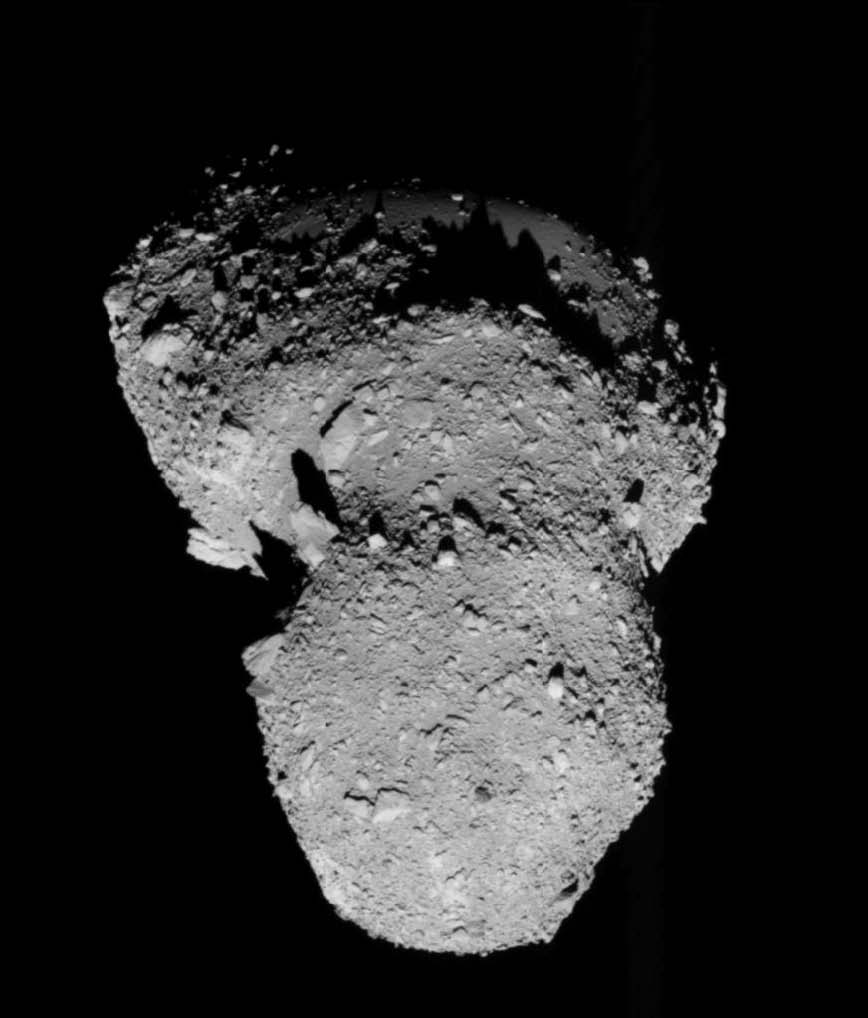On 20 November 2005 the Japanese spacecraft Hayabusa made the first of two touchdowns on asteroid Itokawa in an attempt to collect samples for return to Earth. Itokawa measures just 500 m (1,600 ft) across its longest axis. (source: Guiness Book)
"Impossible" Attributes
Hayabusa made two attempts to collect samples from the 535-metre-long space rock in November 2005. The attempts appear to have failed, but that will not be clear unless the spacecraft can be returned to Earth, which scientists are hoping to do in 2010. But during its approach, the spacecraft did take images and other data on Itokawa's topology, composition and gravity field.
What they found was completely unexpected. "Five years ago, we thought that we would see a big chunk of monolithic rock, that something so small doesn't have the ability to hold onto any pieces," says Erik Asphaug, a planetary scientist at the University of California in Santa Cruz, US, who is not involved with the mission. "Everything we suspected about it turned out to be wrong."
The spacecraft showed a surface littered with boulders and gravel, suggesting it was made of the debris from a larger asteroid that was shattered in a past collision. The latest observations from Hayabusa put an approximate size limit on that parent body.
Onboard gamma-ray and infrared spectrometers reveal the asteroid is composed of the "raw materials" of planets, such as olivine, pyroxene and metallic iron, says Asphaug. But these materials do not appear to have melted and separated, as would be expected if the parent body was larger than about 200 kilometres across, he says.
Measurements of the asteroid's gravity field also suggest it coalesced from the debris of a previous collision. Hayabusa scientists used the data - combined with measurements of the space rock's size - to estimate its density. It appears to be 40% porous, or filled with empty space.
"That is astonishing," says Asphaug, adding that a handful of sand has a porosity of 20%. "It's very hard to get porosities greater than that. You've got to start balancing things delicately, like you were building a house of cards," he says. "The only way to do it is to gently pack the stuff together."
It Should be Denser Due to Impacts
But that raises another mystery, he says, since repeated impacts with other space rocks over millions of years should have made Itokawa denser. "Every time you have an impact, you're going to tamp it down," he says.
And Itokawa certainly appears to have had its share of cosmic run-ins, even though it does not show many craters. New craters are thought to be buried by gravel that flows into them when Itokawa shudders after being struck by a space rock. This shaking is also thought to have buried the powdery dust created in such impacts, leaving only larger boulders and gravel-sized rocks visible.
Crosses Earth's Path
Itokawa does cross the Earth's orbit during its 1.5-year-long path around the Sun, but calculations show it will probably never hit the planet. But Asphaug says an asteroid the size of Itokawa is expected to strike the Earth once every 50,000 years, making robotic - or even human - missions to asteroids of compelling interest. "You want to be ahead of the game" in the event that an asteroid is found on an impact course, he says.





